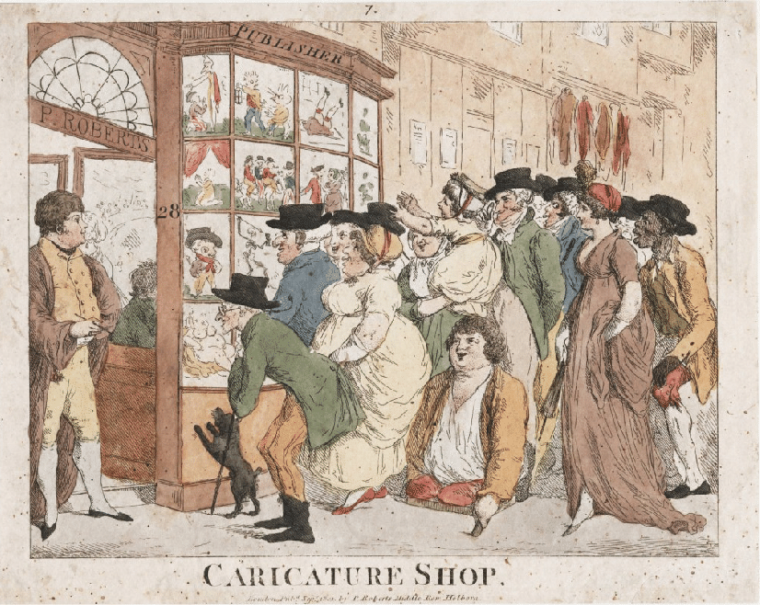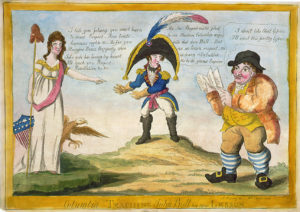The Proliferation of the Myth

The facts that made Napoleon seem short are half of the story. During his lifetime, leaps and bounds were made in printing and publishing. The price of printing was coming down. More and more printing was done with images. Art, including caricature, that had previously only been available to the aristocracy and the church was making its way to new middle-class hands. There were also new technologies on the way that would make caricature even more widely available.
The 18th century is a revolutionary era in more ways than one. At this time in history the aristocracy and nobility in Europe especially France and England were losing their hold on wealth and power. Wealth was shifting away from owning land upper classes to a new middle class that lived in cities. The middle class needed a way to show off their new gains. Art has always been a status symbol of the super rich, but it was just beyond the means of the middle class. Seeing the demand for art by the middle class some people seized and capitalized on it. English artist William Hogarth was one. He’s notable not only for his satirical caricatures and paintings, but he also sold prints of his work. While an original painting was well out of monetary reach, a print was available at a fraction of the price. Mass production of art prints was only the beginning.

Just as American and French revolutions brought sweeping change, the beginnings of the industrial revolution was bringing changes to publishing and mass producing art. In 1796 Lithography was invented by Alois Senefelder. Louis-Nicolas Rober filed a patent for a machine that could mass produce paper. These advances made newspapers and other publications more widely available than ever before. News of events was spreading faster and so did opinions about what was happening. As Napoleon began to conquer Europe, most people were well aware and not happy about a new tyrant. Caricature and satirical art were a fantastic way to not only report on events but make the publishers’ stance on the matter understood.


The newly born “media” saw Napoleon’s actions as overreaching and unnecessary, but his success made him untouchable. But as word of his successes spread so did the rumors of what he was like. While only force of arms could stop Napoleon, caricaturists were quick to belittle him on every shortcoming they can find. Bonaparte’s height became a sort of shorthand for the man himself. The myth of his greed, arrogance and short height were all bundled together to make a very consistent caricature. And that standardized caricature was proliferated through the Popular media of the day, newspapers and periodicals. Bonaparte’s likeness became what we today call a meme. His name became synonymous for someone who was small, arrogant, petty and angry. Napoleon’s meme propagated just like it would today, through popular media.
An easily noticed and corrected mistake was the seed of Napoleon Bonaparte’s enduring caricature as a short man. His own decisions and actions, as well as advances in printing and publications that cemented the myth of his tiny stature and made it unforgettable to the point where this image of him still endures today. This makes Napoleon the greatest victim of caricature and his caricatured image the most long-lasting in all of history.
